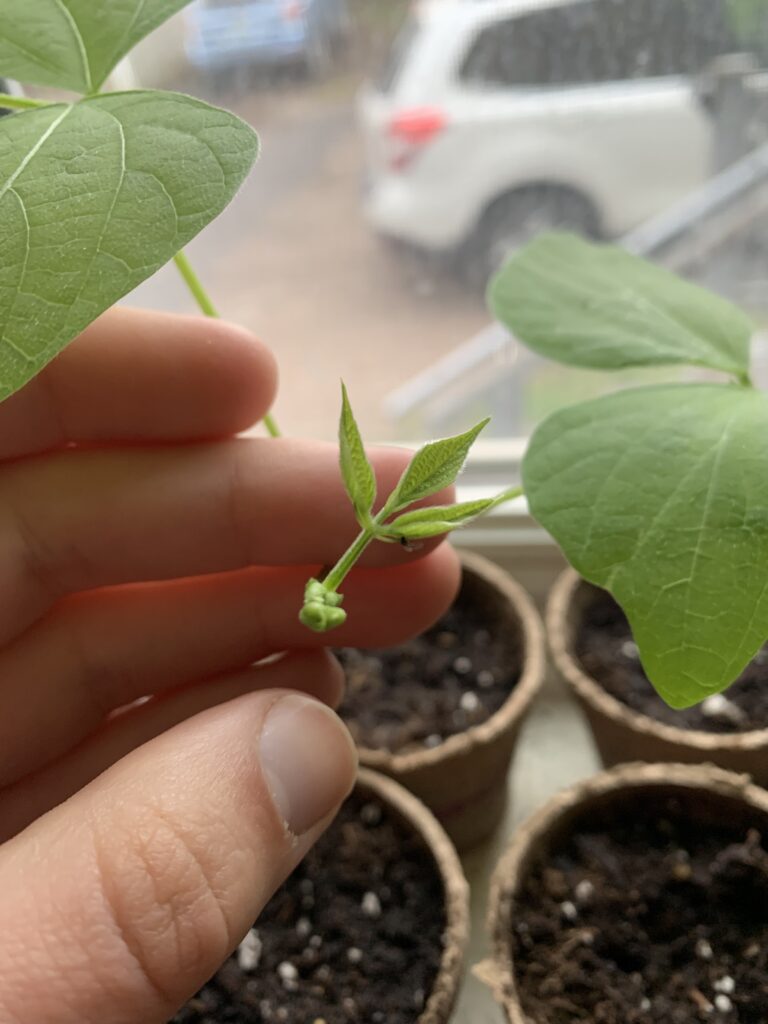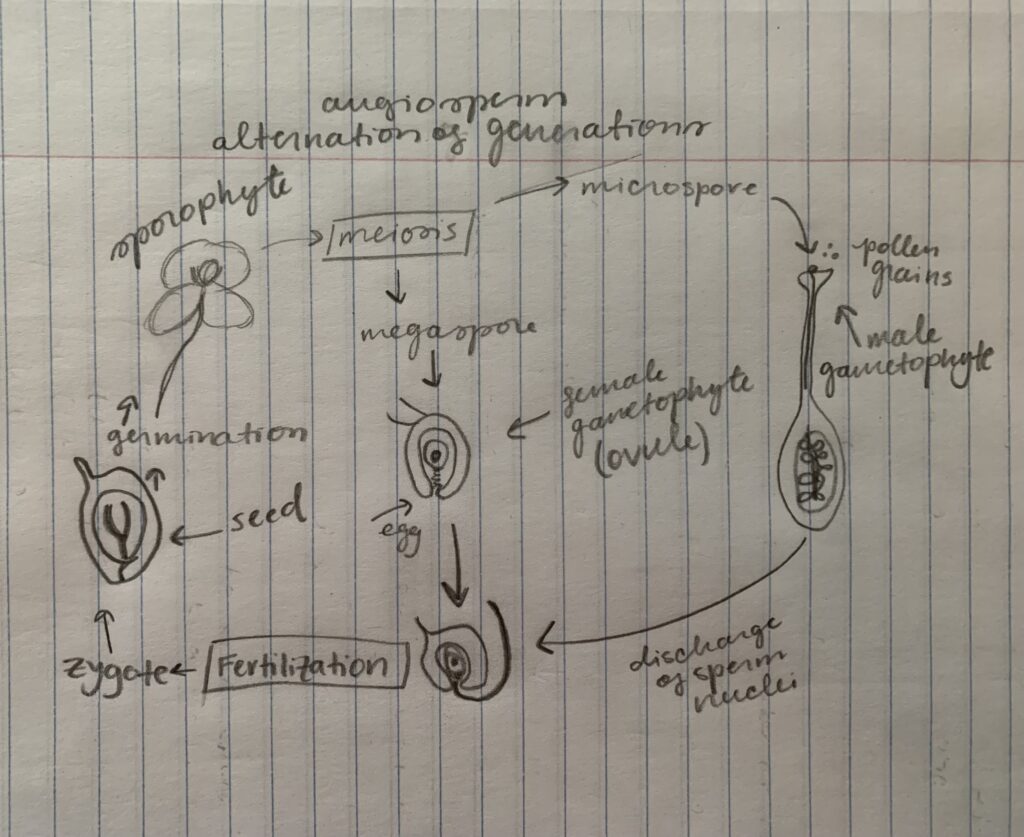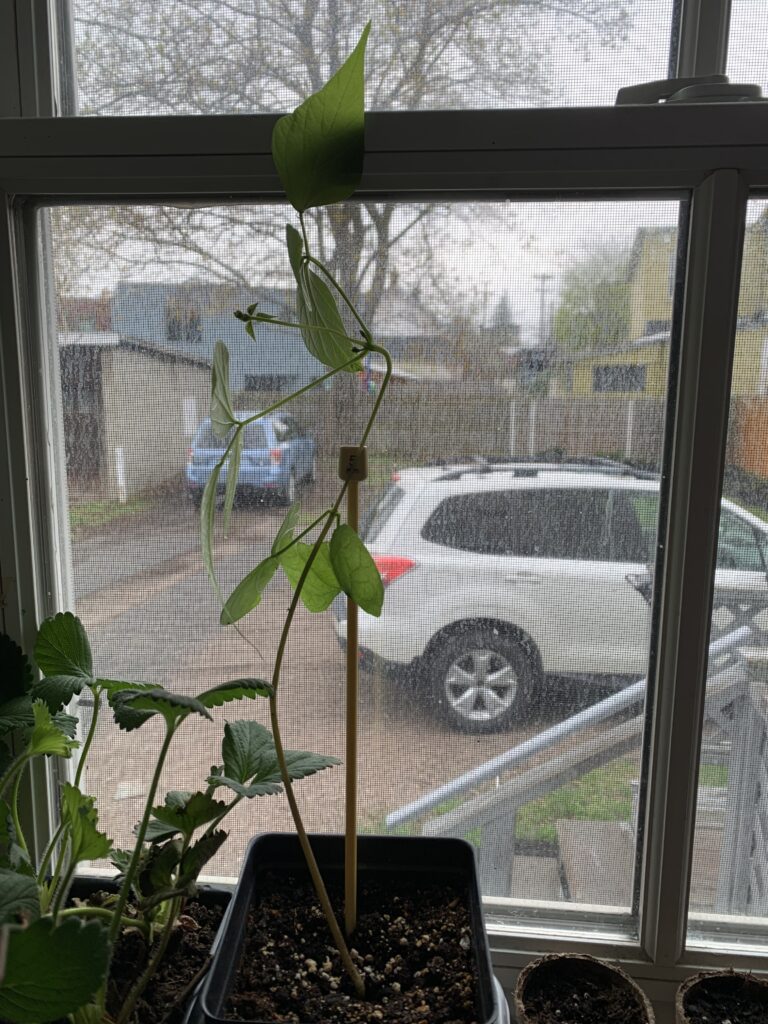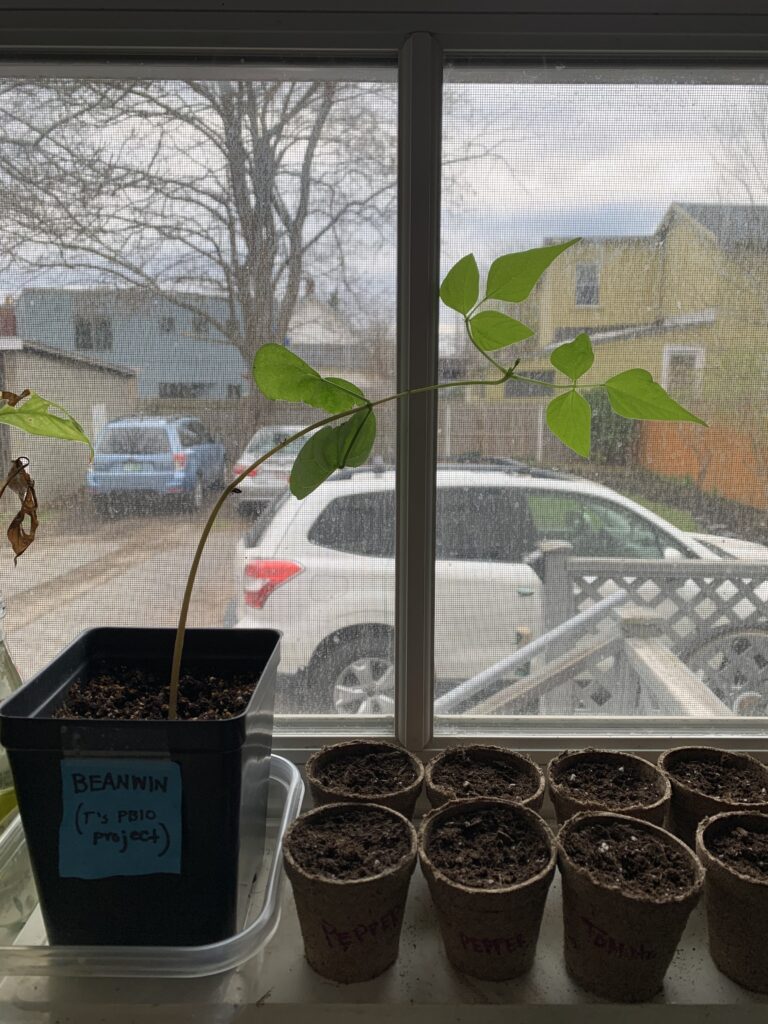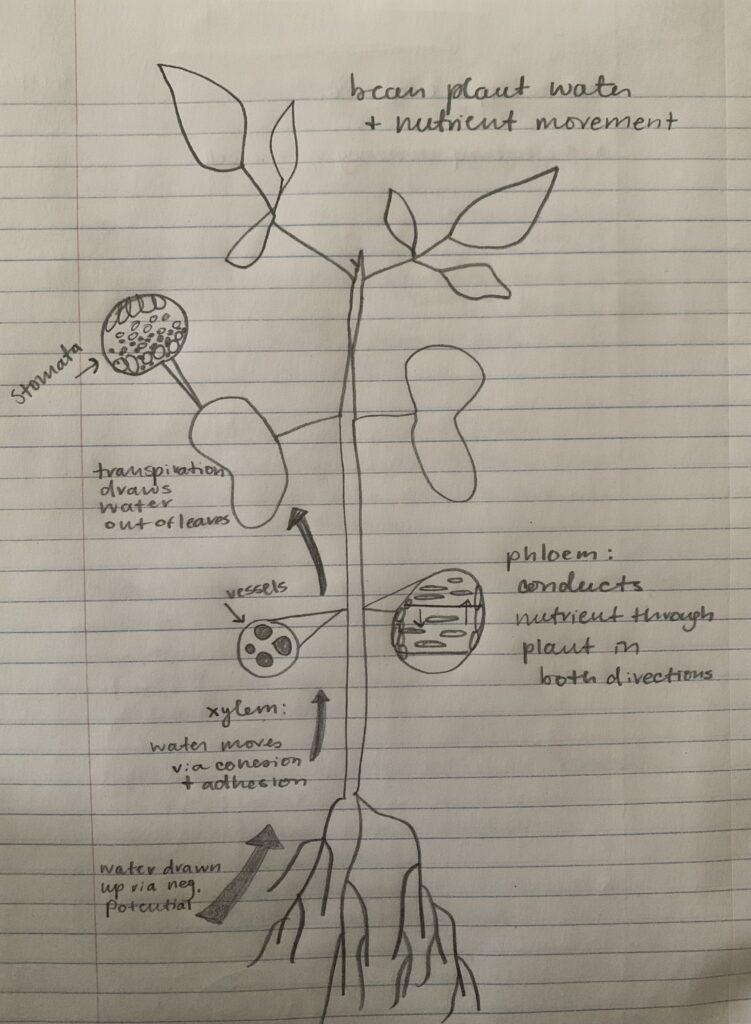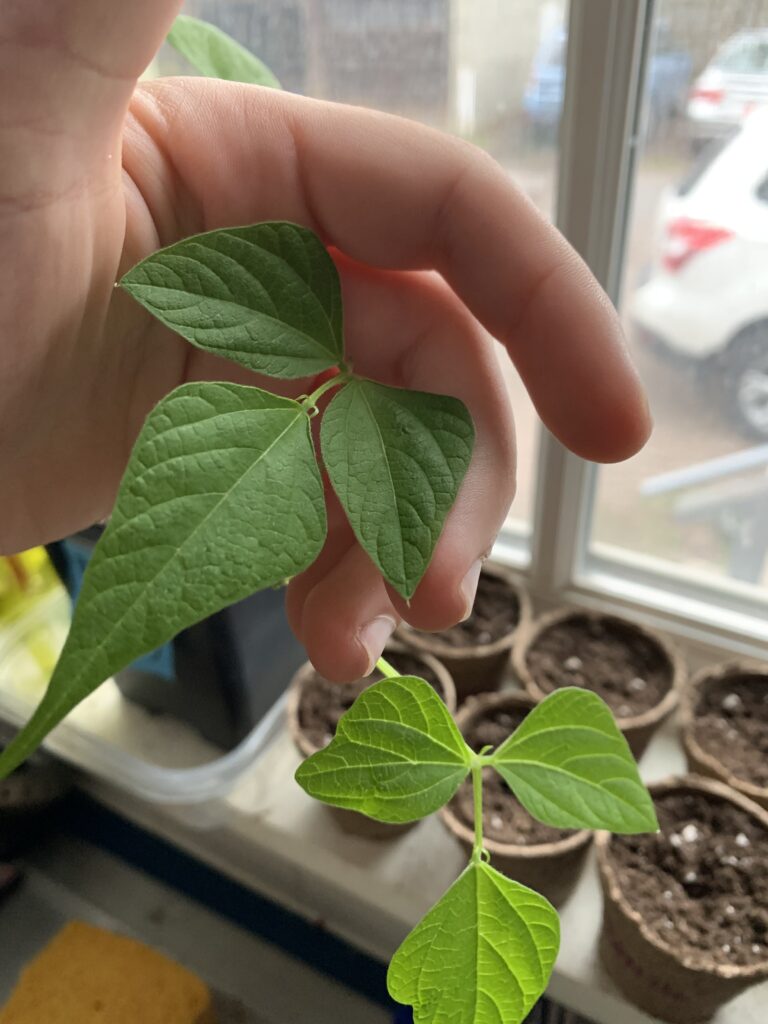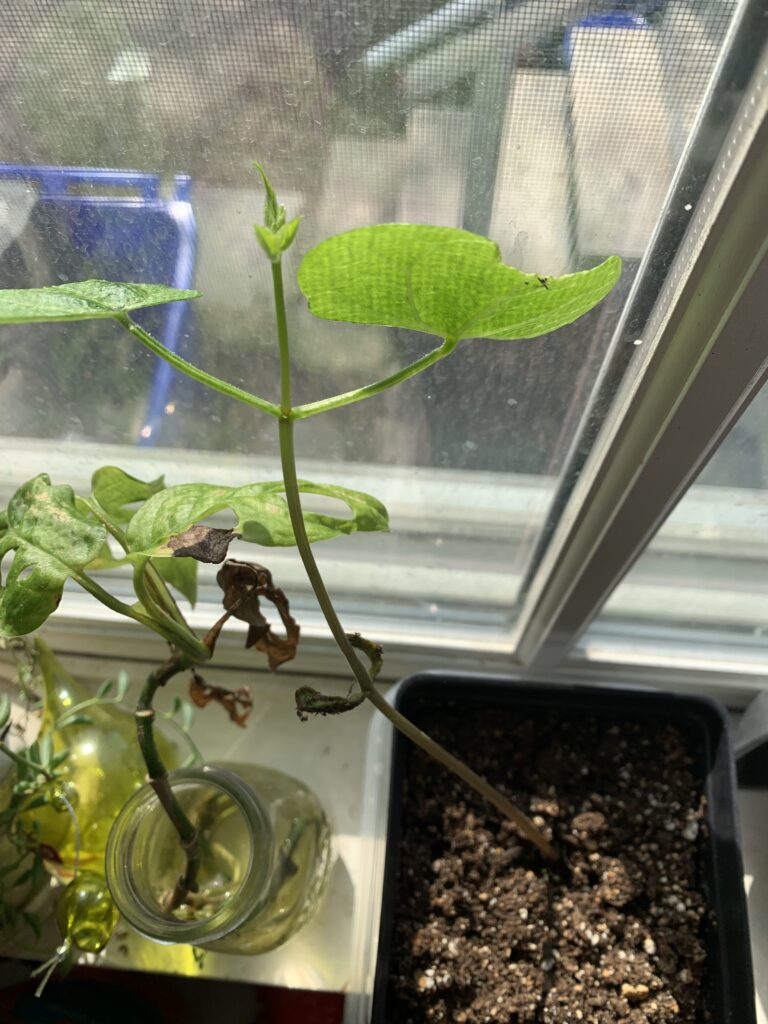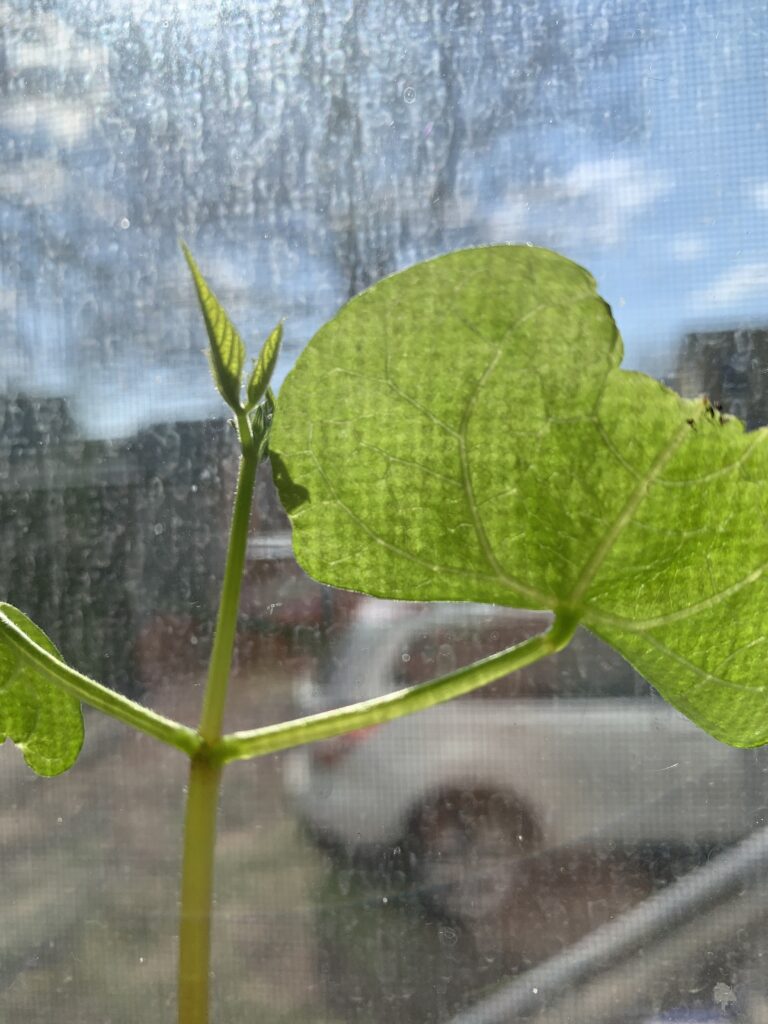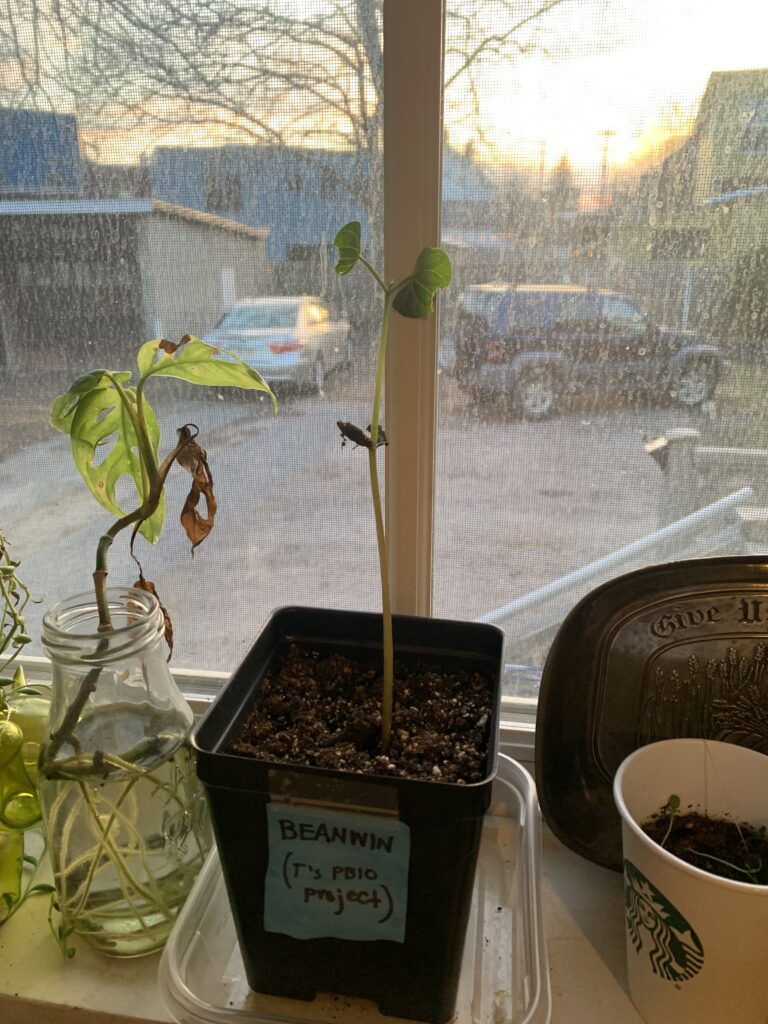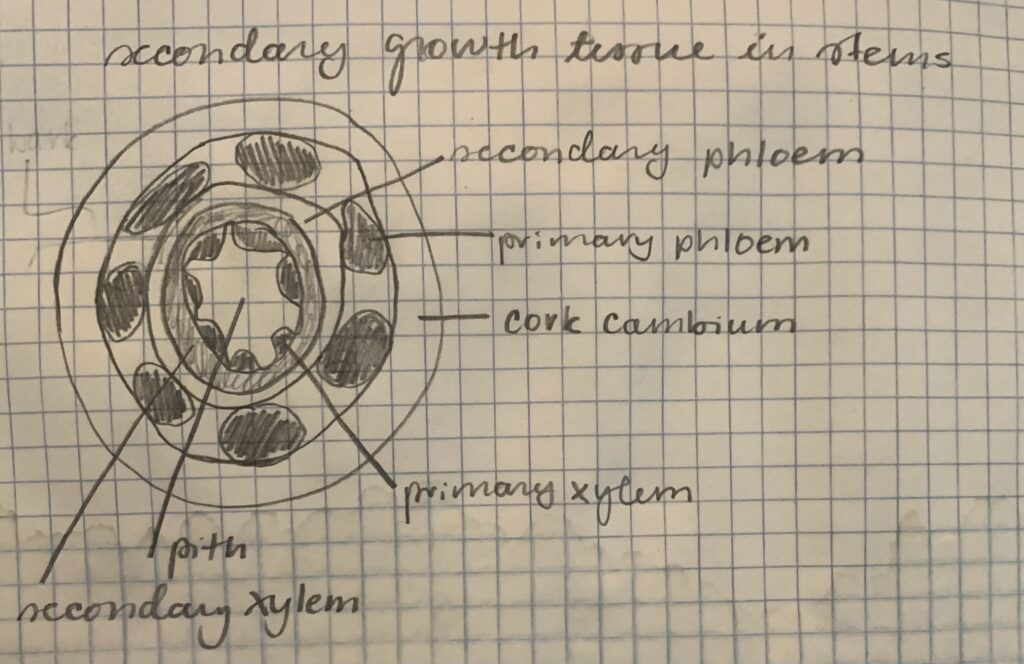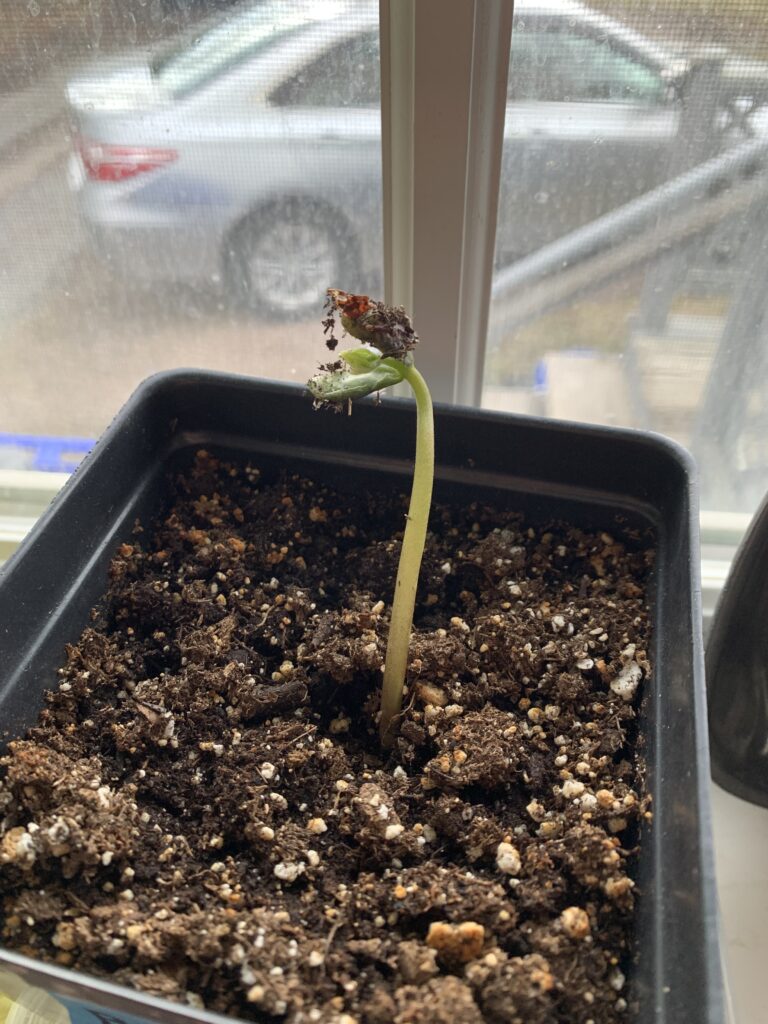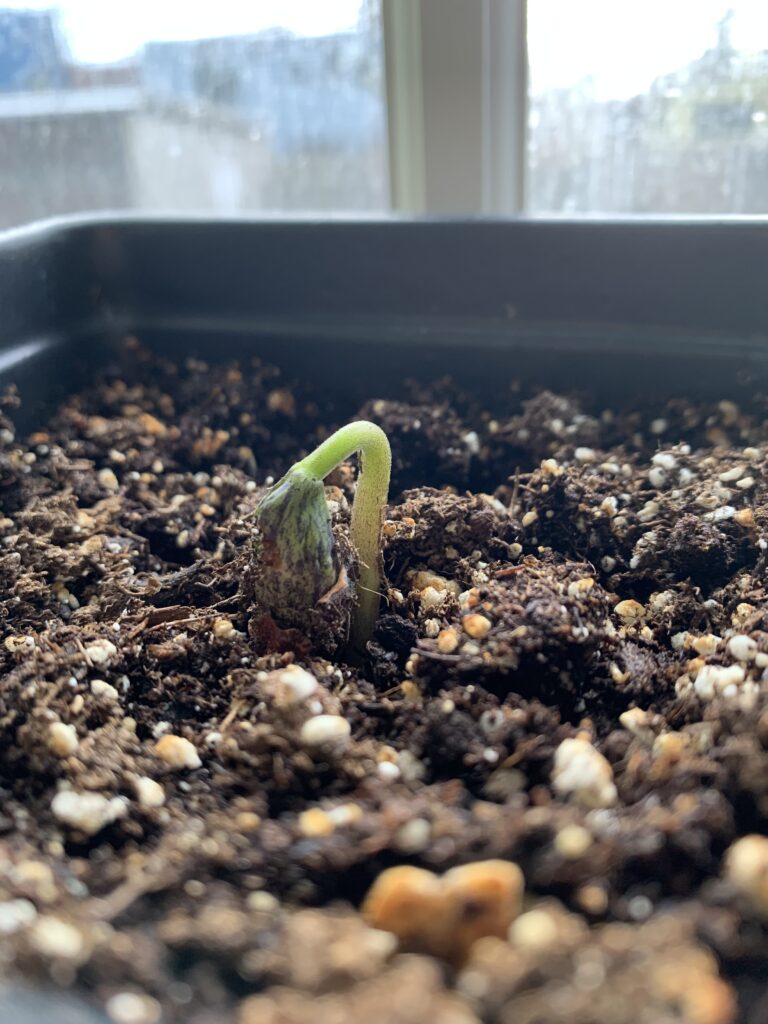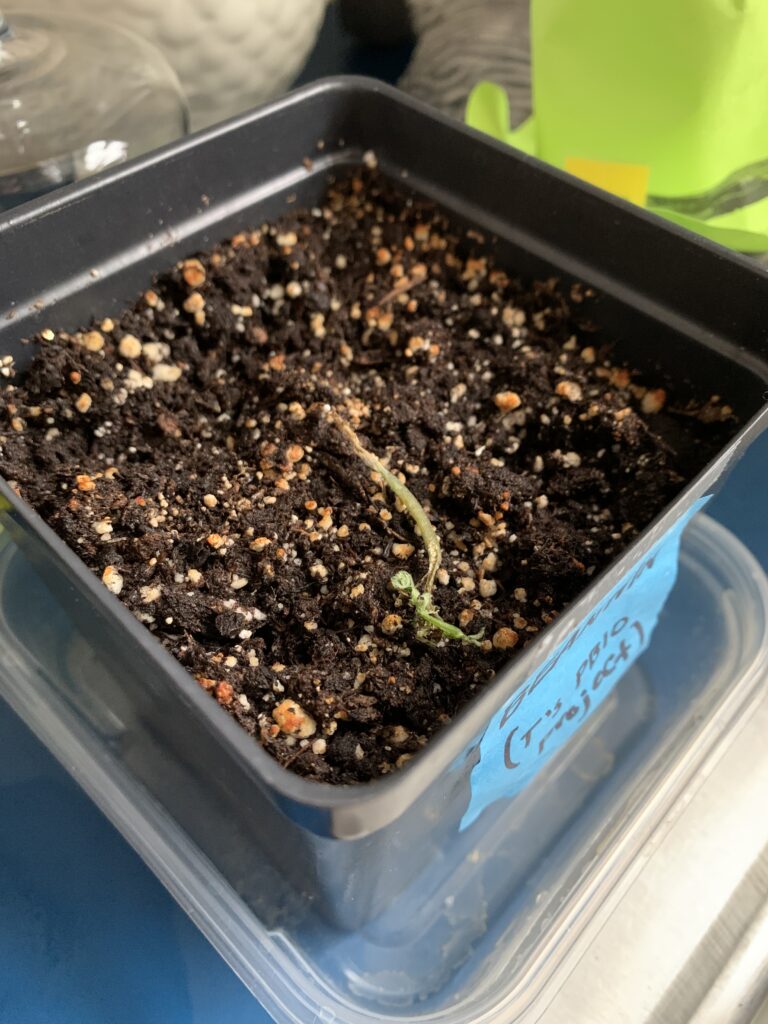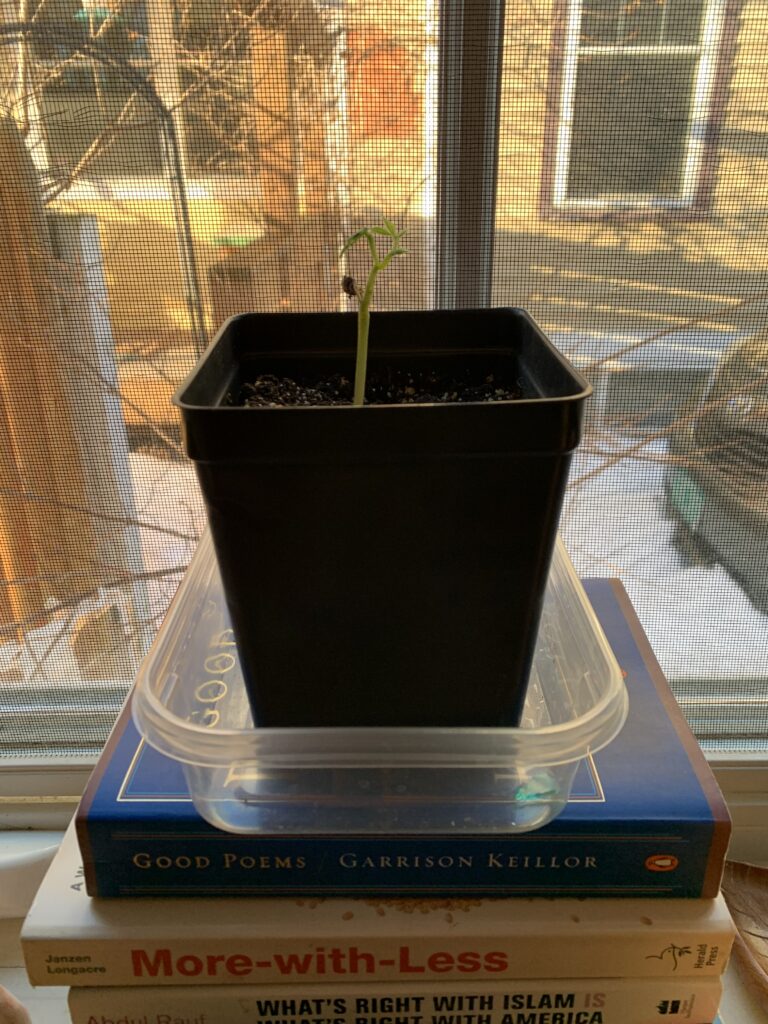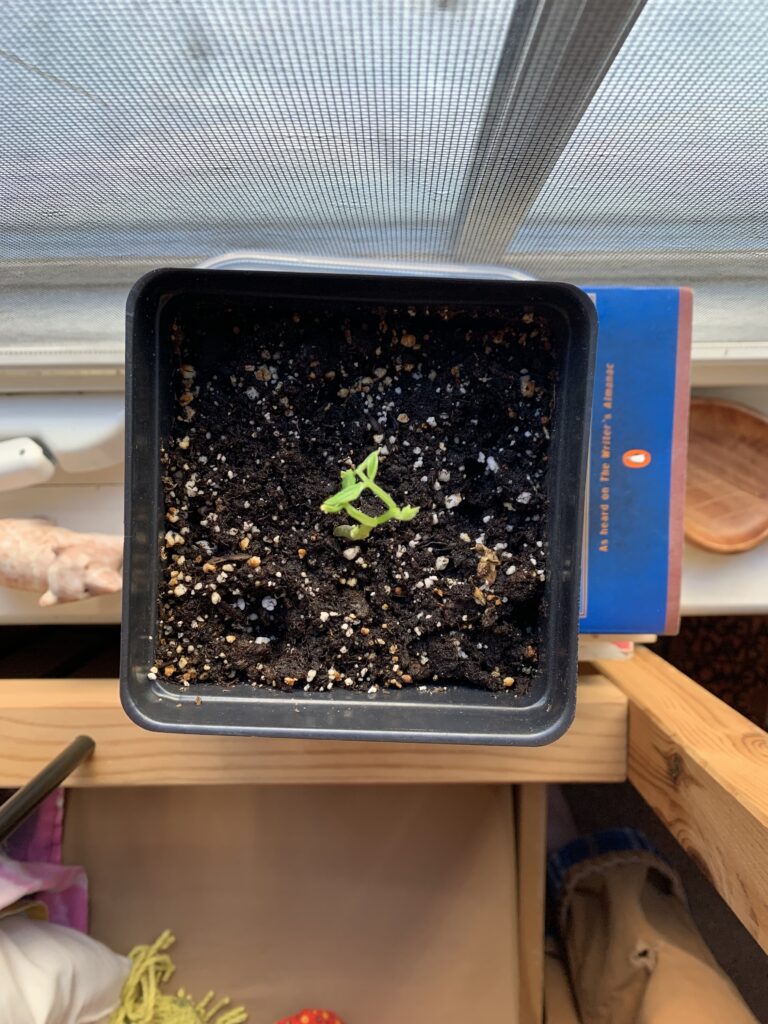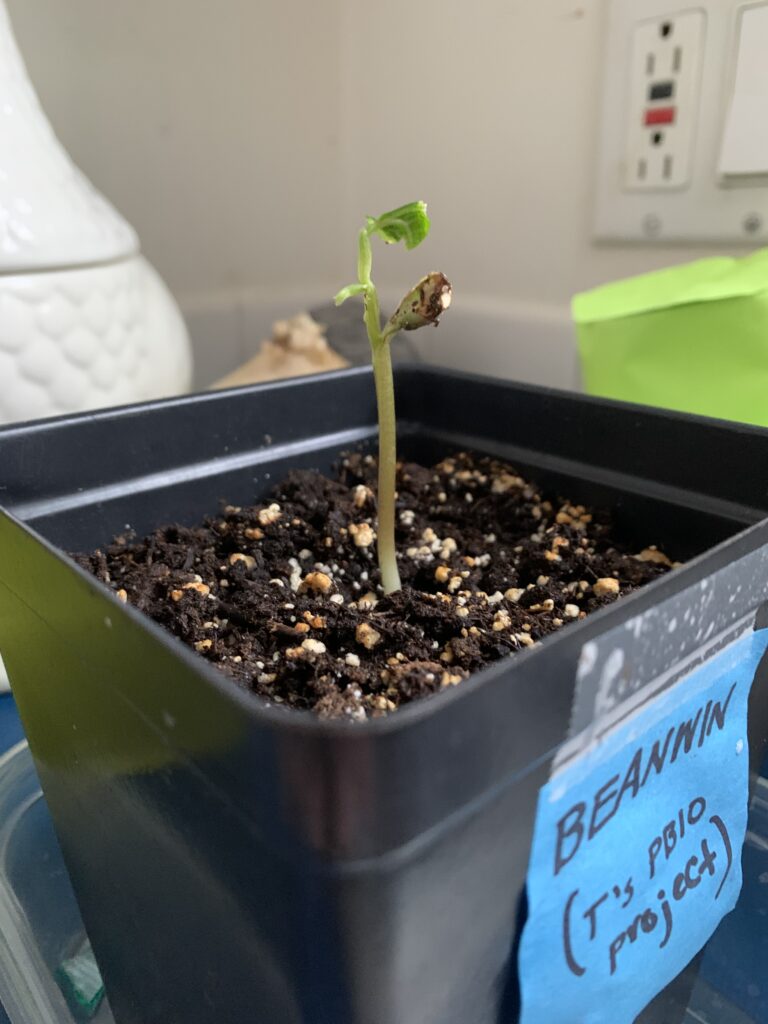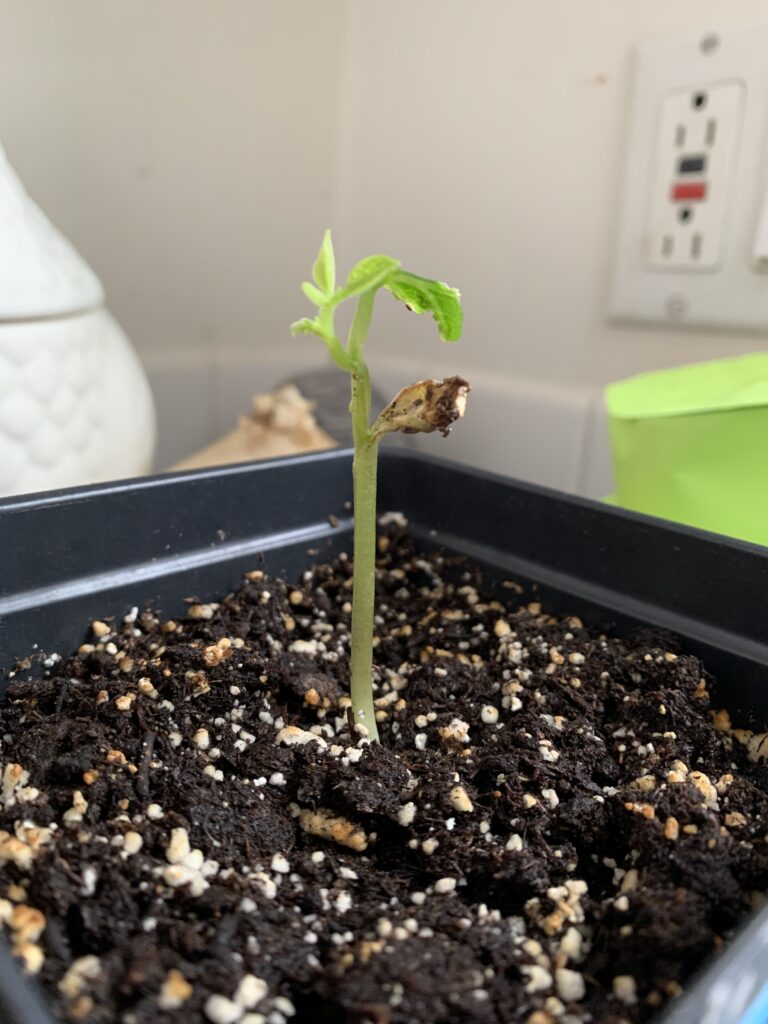A new set of leaves is beginning to sprout! While I’ve run out of time to document any potential production of beans, I’m optimistic that they will appear eventually. This will be the summer of beans. I don’t even know what species of bean this plant is, which is all the more exciting! My plan is to move the plant outside during finals week– hopefully it will be consistently warm by then and the planting of the bean can serve as a celebration of the end of the semester. The end is in sight (but not for my lovely, persistent baby plant).

